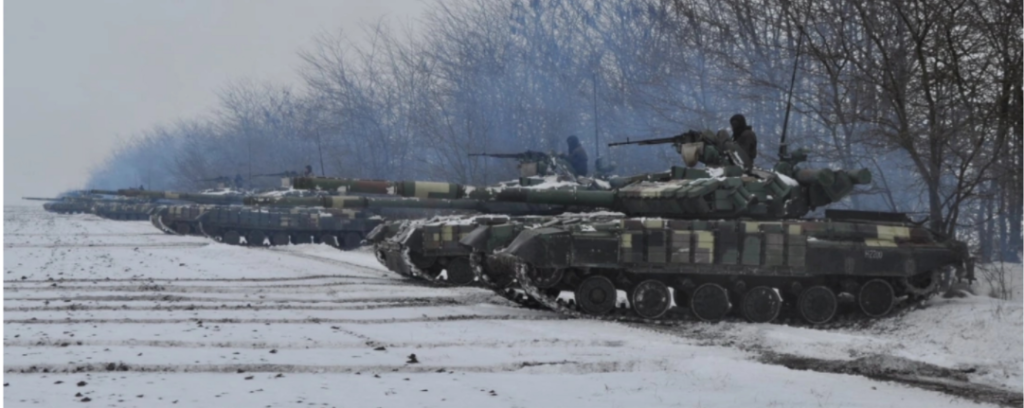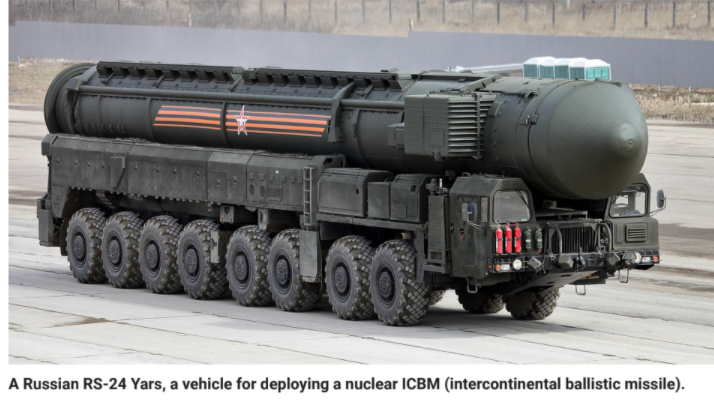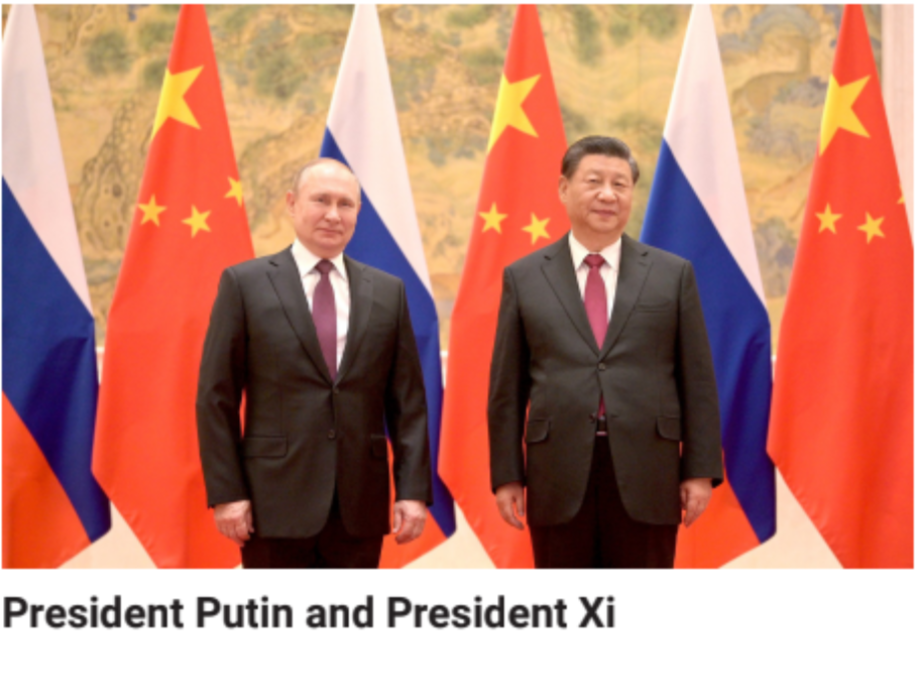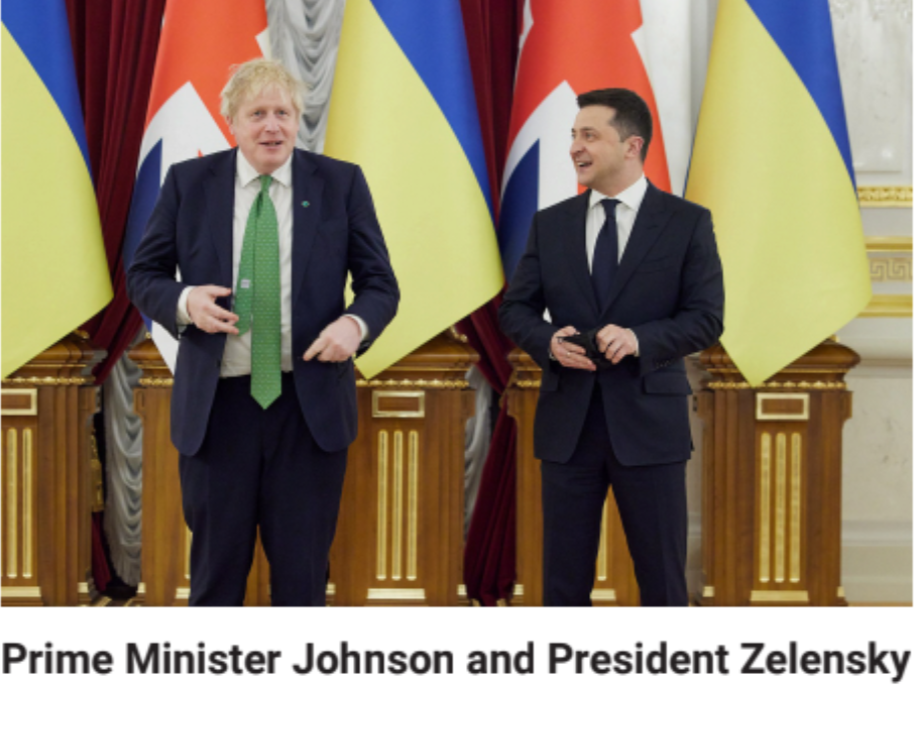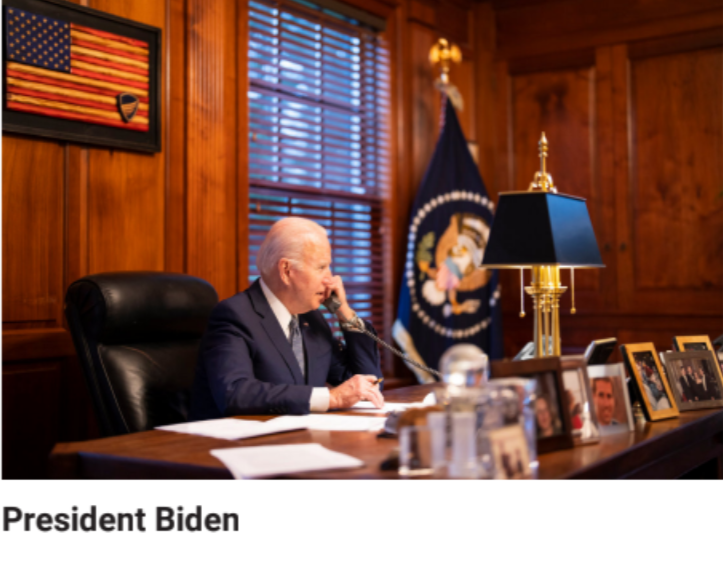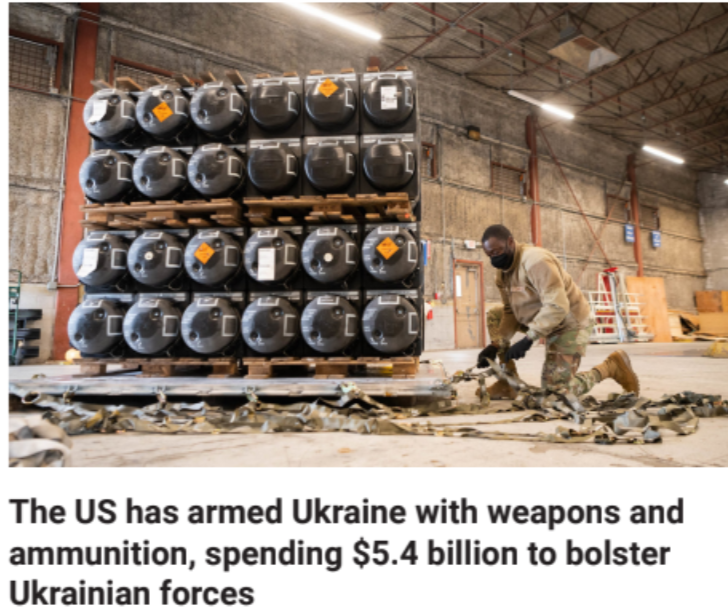The following is a statement by the
International Trotskyist Committee for the
Political Regeneration of the Fourth International (ITC)
Defend an Independent Ukraine
Ukrainians: the progressive workers and oppressed peoples of the world stand with you
Russian soldiers:
Putin is your enemy,
not the Ukrainian people
2022.02.27, 2022.03.01
——————————————————————————————————–
Revolutionary Workers League (U.S.) Revolutionary Internationalist League (U.K.)
Now, six days after the start of Putin’s brutal invasion, not one major city in Ukraine is under Russian control. The invading forces are facing an armed population, while in Russia, thousands of people in Moscow, St Petersburg, and many other cities have defied Putin’s bloody tyranny by demonstrating against the invasion.
On 21 February (three days before the invasion) President Putin announced that Russia would now regard Donetsk and Luhansk, the two Russian-backed and controlled break-away areas in eastern Ukraine, as ‘independent’ states. The Russian government subsequently confirmed that it supported the claim of those statelets to the whole of the Donbas region of eastern Ukraine (the break-away districts only cover a third of the Donbas). The Donetsk and Luhansk ‘states’ were originally established as part of the previous Russian military intervention in Ukraine in 2014/15, at the same time that Putin occupied and annexed Crimea.
With his false declaration of independence, Putin consigned the Minsk agreements to the rubbish-bin of history, along with any further French and German attempts to negotiate a compromise. The Minsk agreements were negotiated in 2015, as a ‘European solution,’ between Russia, Ukraine, France and Germany. They were never implemented, but if they had been, Donetsk and Luhansk would have become autonomous provinces of Ukraine – and they (in reality, Putin) would have had a veto on decisions by Ukraine’s central government.
The real meaning of ‘independence’ for Donetsk and Luhansk is that Putin discarded the policy of weakening Ukraine by creating internal chaos and division. The plan now is a Russian military conquest of the whole country.
That plan was put into operation in the early hours of 24 February, by which time the Russian forces surrounding Ukraine totalled 190,000. Those forces attacked by land, sea and air. Army units crossed into Ukraine from Belarus, from Crimea, by sea at Odessa, and across the Russian/Ukrainian border in the north and east. Kyiv, the capital, and other cities were wakened by massive missile bombardments. The bombardments have continued and even been extended – with, for instance, airports and military airfields under attack and an oil depot and pipelines bombed and blown up in Kharkiv. This is by far the biggest military operation in Europe since the end of World War Two in 1945 (even bigger in scale than the disastrous wars and western interventions that tore apart the former Yugoslavia in the 1990’s, and still dominate political relations in the western Balkans).
Without any doubt, Russian forces not only greatly outnumber Ukraine’s but have much more powerful and sophisticated armaments. The Ukrainian army and airforce are larger, better equipped and better trained than they were in 2014, and it has always been clear that the Ukrainians would put up a determined resistance. But the general consensus among Western military “experts” was that the Ukrainians would inevitably be overwhelmed, relatively quickly, by the Russian military onslaught. Those assumptions have now been overturned, not because of any technical miscalculations, but because the famous statement of Von Clausewitz, that “War is politics by other means,” is true in more complex ways than is generally understood. To put this more precisely:
The politics of the Russian elite, and of the US government and NATO in this war, are clear enough; the politics of the Ukrainian and Russian (and western) masses could only become clear in action. That has happened – and it has radically changed the military and political situation. The Ukrainian army and airforce are fighting bravely (and it seems like a small miracle that the airforce is still operational) but they are part of a political/military struggle that is very much wider. They are now part of an armed population that – and this is a very important factor – unites Ukrainian and Russian speakers.
The armed population is fighting heroically and creatively, and they are fighting for a free and independent Ukraine. Whatever political differences there will certainly be, this is not fundamentally a war for NATO – an organisation that (as recent research has indicated) the majority of Ukrainians do not trust.
This war is deeply unpopular in Russia. The demonstrations are only a sign of that (though a significant one). Moreover, the opposition to the invasion is encouraged by the growing awareness that the elite itself is divided over Putin’s policy.
The discontent with Putin’s rule in Russia and, even more, the mass mobilisation and self-organisation of the Ukrainian people, are having a profound impact on the attitude of the Russian soldiers in Ukraine. The history of the twentieth century shows that mass, prolonged bombardment is not enough, by itself, to break the spirit and resistance of citizens, who are convinced they are defending the survival of their own homes, families, and country against a predatory enemy.
To win control, an invader must have troops that come into close contact with the defenders and the civilian population, especially in the cities; that means mainly the infantry and armoured units (tanks, etc.) a high proportion of whom are likely to be conscripts, which is certainly true of the Russian troops in Ukraine. It has become clear that the increasingly slow progress of the invasion is due to the simple, mutually reinforcing facts that the hearts and minds of Russian conscripts are not in this fight and the hearts and minds of the Ukrainian people are. That becomes clearer as more and more Ukrainian civilians are confronting Russian soldiers and being listened to.
To put it simply, more and more of those soldiers are realising that Vladimir Putin is the Russian soldiers’ real enemy, not the Ukrainian people.
In World War I, Lenin famously called on the rank-and-file soldiers of the two hostile imperialist armies to “turn the guns the other way” – to recognize that it was the exploiters and oppressors on both sides who were their real enemies, not the soldiers on the other side. On the front, socialist agitators led soldiers to defy their officers. Bolsheviks organized the fraternization of Russian and German soldiers.
In Ukraine, undoubtedly, there are Russian officers as well as rank-and-file soldiers who are already taking the first step of this perspective: recognizing that the cruel Putin regime is the real enemy of the Russian and Ukrainian peoples, alike, and that Ukrainians are the Russians’ sisters and brothers.
Throughout history, oppressed peoples, surrounded by richer and more powerful oppressors, have been forced to accept “assistance” from one oppressor in order to survive the onslaught of another. This is the situation today of the Ukrainians who must “ally” with the US and NATO and join the European Union in order to defend themselves against Putin’s to devour their nation. This does not cancel, but rather intensifies, the importance of the Ukrainians’ historic commitment to genuine independence from all would-be exploiters of their country.
These developments have made Putin more desperate (the nuclear alert announcement) and at the same time they have forced the Russian government into talks with the Ukrainian leadership. They have almost certainly alarmed the Chinese leadership and led them to put pressure on Putin, and increased the divisions within his own circle of advisors and ministers. The global wave of support inspired by the national struggle in Ukraine has given the NATO powers and the EU cover to send more armaments to Ukraine and impose harsher economic sanctions on Russia – but their aim is not to build the mass movement of the Ukrainian people fighting to be a really free and really independent nation. That would be almost as alarming to the western imperialists as it is to Putin. The aim of the western imperialists is to co-opt that movement (and its worldwide supporters) and turn it into a support base in their struggle for global supremacy. With regard to the NATO/EU powers the aim is to be the chief exploiters of Ukraine. With the USA specifically, it is to create an obstacle to China’s ‘Belt and Road’ project.
The growing national resistance in Ukraine must understand that it created its own victories and owes nothing to NATO. Any support from NATO, the EU and the US comes with strings attached. The forces fighting for a free and independent Ukraine must cut the strings and control how the support, military or otherwise, is used. The Ukrainian soldier and masses should now carry out systematic fraternisation with the Russian forces. The Russian soldiers will then find their own ways to deal with commanders who order them to fight Ukrainian brothers and sisters.
Without trying to predict future developments, all revolutionary, socialist and progressive forces in Ukraine, Russia and internationally must recognise the significance of the latest developments. A new face of eastern Europe has become visible, a new and progressive political force is emerging in the former Soviet republics. The two struggles – for a free and independent Ukraine and for the overthrow of the Putin dictatorship in Russia – are completely entwined with one another, in real practical action.
To achieve victory that struggle must overthrow and remove the oligarchs of both countries who are the real allies of both Putin and NATO
The ITC and the immigrant-rights fighters of BAMN and the Movement for Justice welcome the historic developments of the last five days and send this message of solidarity to all our Ukrainian and Russian brothers and sisters in struggle.

Stop the Imperialists’ War-Drive – No War for Control of Ukraine
No NATO War with Russia!
For a free, independent Ukraine – No NATO take-over – No Russian invasion
‘West’ or ‘East’: The Main Enemy is OUR OWN Ruling Class
- Only the revolutionary struggle of workers & the oppressed can stop an imperialist war drive
- Open the Borders to refugees & immigrants
- Lift the sanctions that are destroying Afghanistan
18th February 2022
Revolutionary, socialist and progressive forces around the world must now respond to the twin dangers of a Russian invasion of Ukraine and the US/NATO mobilisation against Russia.
The conflict between the major imperialist powers and alliances has been escalating dangerously, and with it the threat of outright war between them. The last six months have seen this conflict move beyond the decades of proxy wars that continue to devastate the ‘wider Middle East,’ from Libya to Afghanistan. It has been moving towards a direct military confrontation between the USA, with its NATO and G7 allies, and the China/Russia bloc, which now includes Iran and the central Asian republics.
Over these past six months, starting with the fiasco of the US withdrawal from Afghanistan, the balance of power between these rival alliances has shifted in favour of the China/Russia bloc, and the US and NATO have been adopting increasingly aggressive tactics in response. The governments of China and Russia see the situation as an opportunity to strengthen their geo-political position, in particular by dividing the ‘western powers.’ The US leadership is trying to turn it into an opportunity to re-impose its authority on NATO – and from that perspective, the US appears to have a cynical strategic interest in Putin invading Ukraine, as being preferable to making any concession to Russia.
On both sides the current Ukraine crisis is part of their wider strategy. In immediate terms it is a struggle between the NATO powers and Russia for domination in eastern Europe. However, the central issue in this inter-imperialist conflict remains the growing rivalry between the USA, which is still, for now, the world’s largest economy with the richest ruling class, but which is in decline and divided, and China, which is the second largest and fastest-growing economy in the world, and the biggest exporter of manufactured goods.
Over the past month Russia has moved more troops and armaments towards the border with Ukraine, and NATO has been stationing more military units and missiles in its eastern member countries, close to Russia, while conflicts of interest between the western powers have become more apparent. This was the context in which the Chinese and Russian regimes issued an assertion of their joint interests and aims. Following the meeting between Presidents Xi and Putin in Beijing (at the opening of the Winter Olympics – a huge prestige project for Xi’s global ambitions) the two governments published a statement that can best be described as a plan for a new world order under Chinese leadership.[1] Russia pledged support for China’s ‘war aims’ (Taiwan, and the reversal of US military and naval policies in the Asia/Pacific region) and China pledged support for Russia over Ukraine and opposition to any NATO expansion. Both pledged their opposition to ‘Colour revolutions’ (a term for mass protests – seen as ‘western backed’ – against authoritarian regimes in former parts of the Soviet Union, e.g. Orange revolution in Ukraine, Rose revolution in Georgia).
And they both commit to “Intensifying practical cooperation for the sustainable development of the Arctic” and to the “Development and use of Arctic routes,” thus declaring their investment in a continuing climate crisis. The word ‘sustainable’ is used for the sake of appearances; it is as empty as the prayer, “God make me pure, but not yet.” In this they are no more cynical than western powers that promise Net Xero Carbon and open new coal mines and oilfields – or the western imperialists’ International Monetary Fund (IMF), that condemned China for continuing its Zero Covid policy because it was bad for business.[2]
Whether or when war breaks out in Ukraine this confrontation is already serving its purpose for Russia and China by continuing the shift in the balance of imperialist forces and deepening divisions in NATO. That makes the threat of a new World War much more real and brings it closer.
The world is being drawn deeper into a crisis similar to that described by Leon Trotsky in 1938:
Under the increasing tension of capitalist disintegration, imperialist antagonisms reach an impasse at the height of which separate clashes and bloody local disturbances… must inevitably coalesce into a conflagration of world dimensions.
L D Trotsky, The Death Agony of Capitalism and Tasks of the Fourth International (The Transitional Programme).
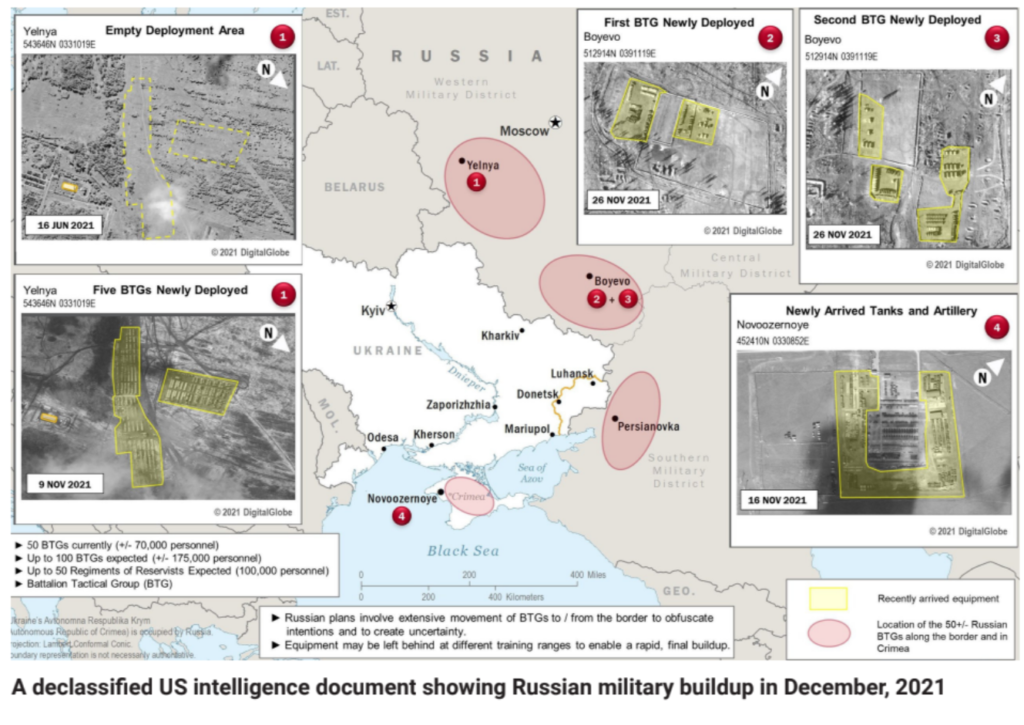
Increasing tensions in eastern Europe
Over a hundred thousand Russian troops with armaments, including nuclear missiles, and military infrastructure were stationed along the border with Ukraine during the final months of 2021 and throughout January. During the same period Russia started reducing supplies of natural gas to European Union (EU) countries, at times shutting it down completely. Meanwhile the USA pledged to continue its arms supplies to Ukraine and threatened economic sanctions in the event of an invasion.
A series of meetings between Russia and the western powers during the second week of January ended in total stalemate. Even before those discussions ended, Putin began to move more army units and armaments from Russia’s Far East. Many of those are now in Belarus, where they are carrying out joint ‘exercises’ with the Belarussian army on its border with Ukraine.
For nearly three decades, President Lukashenko’s authoritarian, post-Soviet regime in Belarus, between Russia and Poland, maintained a rather astute balancing act between Russia and the EU, based on the support of workers in the heavy industry sector that the government kept under state ownership – unlike the regimes in other post-Soviet and East European countries. Those workers, however, joined political mass strikes against the government in August 2020, becoming the strongest force in the mass protests that shook the regime following a rigged election and the mishandling of the Covid pandemic. Lukashenko had to call on Russian support to maintain his power, and now his brutally repressive regime is Putin’s puppet and Belarus is a potential launch-pad for a Russian invasion of western Ukraine.
In January this year, Putin further strengthened his regional authority by sending troops to maintain an authoritarian capitalist regime against working class revolt in another part of the former Soviet Union, this time in mineral-rich and oil-rich Kazakhstan – a country that produces up to 40% of the world’s Uranium. The Socialist Movement of Kazakhstan reported that strikes and protests broke out following the government’s doubling of transport fuel prices; they developed as anti-government strikes and protests across the extractive industries that are the mainstay of Kazakhstan’s economy, and in the cities.[3] The Russian intervention crushed the strikes and protests and allowed Putin to impose a settlement on the rivalries within the ruling elite.
Putin used his intervention in Kazakhstan to relaunch the dormant Collective Security Treaty Organisation (CSTO) between Russia, Kazakhstan and four other former Soviet republics (Armenia, Belarus, Kyrghizstan & Tajikistan). He did not need their assistance in Kazakhstan for military reasons, but using his displays of power there, in Belarus, and on the Ukrainian border to revive the CSTO was another step towards achieving his wider vision, one shared by his fellow Russian oligarchs. Just as the break-up of the Union of Soviet Socialist Republics (USSR) was the mechanism for restoring capitalism in Russia, so capitalist Russia now needs to gain control of those former Soviet territories to fulfil its imperialist ambitions.
Those ambitions bring Russia into conflict with the western imperialist powers. Control of Ukraine is not just an item on Putin’s wish-list, or on NATO’s; it is necessary for an imperialist Russia to control the country, or at least to prevent the western powers controlling it (which in the end come down to the same thing) and it is equally necessary for the US/NATO plan to maintain America’s global power and thwart Russian and Chinese ambitions. Geography, capitalist economics, and the history that has shaped these states make it so.
Those same factors have brought China and Russia together in an imperialist bloc. They both need that bloc to be strong and united – thus, at the same time as the US and Russian foreign ministers held talks in Geneva on 21st January, without reaching any conclusion, the Russian, Chinese and Iranian navies held joint exercises in the Indian Ocean, and China consolidated its agreements on economic and military co-operation with Iran.
However, Russia’s capitalist and imperialist development is definitely inferior to China’s, so its assertion of power in Europe is also necessary for its balance of power with China within their alliance.
The division of the world: fact and fiction
Western politicians and their media allies proclaim their defence of freedom, democracy and the national independence of Ukraine against Russian dictatorship. Their claims are hypocritical fictions. By democracy and the national independence of Ukraine, they mean that Ukraine should be a bulwark of the western powers against Russian expansion, by freedom they mean that EU and US corporations (rather than Russian or Chinese corporations) should have a free rein to exploit the people and resources of Ukraine.
These fictions expose the cynicism of the ruling classes and politicians of the western powers who have never shown any concern for the independence of the peoples and states they have conquered and continue to exploit. What right does President Biden have to talk about democracy when it is impossible today to ensure equal voting rights in the US, when US police almost always get away with murdering black and Latino people, and when he has by and large maintained Trump’s racist anti-immigrant policies? What right does Prime Minister Johnson have to talk about freedom and democracy when he is undermining and restricting the right to vote, destroying the right of asylum and human rights in Britain, and abolishing freedom to protest?
In the same way, as we explain below, Putin’s talk of ‘The historical unity’ of Russia and Ukraine as ‘one people’ is reviving a historical fiction to justify the subjugation of Ukraine and control of its land, industry, gas and oil pipelines, and Black Sea ports.
No, these are not conflicts between democracy and dictatorship, as western governments claim, nor are they a struggle by ‘developing’ nations against the old masters, the view promoted by the Chinese government and its supporters. The ruling classes of the rival imperialist powers are in a struggle with each other. The aim on both sidesis to retain and and expand – at the expense their rivals – the regions and populations of a finite world that they are able to exploit. It is a battle for hegemony in the capitalist world economy, in Lenin’s words a struggle,
…For the division of the world, for the partition and repartition of colonies and spheres of influence of finance capital, etc.
V I Lenin, 1920 preface to Imperialism, the Highest Stage of Capitalism (1916).
The current conflict is a continuation of conflicts that have racked the world since the rise of capitalist imperialism that has dominated the global capitalist economy since the end of the nineteenth century. The context and cause of the present escalating conflicts is an increasingly precarious global economy, in which the concentration of capital and the parasitic domination of economic life by finance capital have reached monstrous proportions, where poverty and inequality are rising, along with debt and protectionism, and where investment is stagnating. While Russia and China are certainly governed by brutal dictatorships, democracy is under attack on an international scale; authoritarian regimes are basing themselves on racism and ethnic or religious nationalism, and fascism is resurgent – in the USA, in India, in Britain, France, Italy, Brazil etc.
The victims of the conflict are the world’s poor and oppressed: the working class and struggling middle classes, the impoverished neo-colonial countries, women, ethnic and religious minorities, and the millions forced to flee their homes by war, persecution, poverty, famine and the climate crisis. There is no progressive side in the conflict between the two imperialist alliances, no ‘victory’ for either side that would advance the liberation of the exploited masses of humanity.
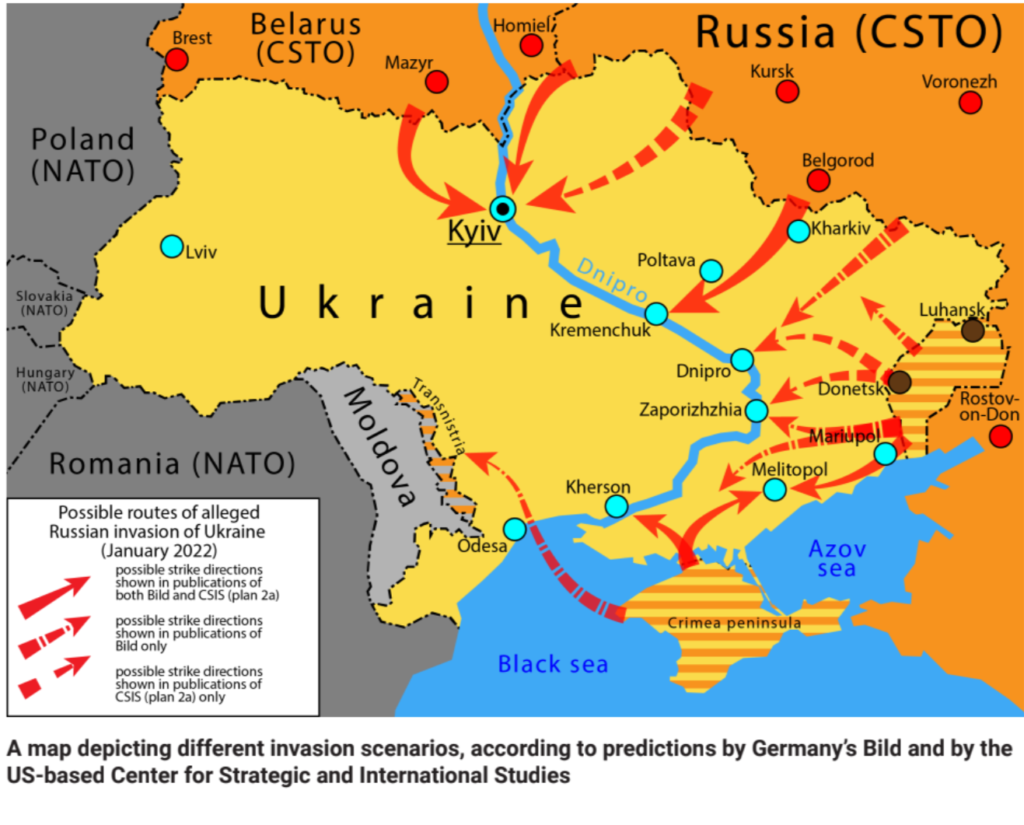
Afghanistan: the turning point
The critical turning point in the move towards a more direct and dangerous military confrontation between the rival imperialist blocs came last August, with the US withdrawal from Afghanistan, which inevitably meant the simultaneous withdrawal of its allies’ much smaller forces.
For the past 43 years the people of Afghanistan have lived, suffered and died in a battleground between rival great powers. In 1979 the Soviet Union invaded the country to prop up the pro-Soviet government established after the monarchy was overthrown. The US (and Saudi Arabia) backed Islamist guerrilla forces in a prolonged war that eventually led to Soviet withdrawal and contributed to the collapse of the Soviet Union in 1991 and the restoration of capitalism in Russia, eastern Europe and central Asia.
Afghanistan itself was left under the control, first of rival war-lords, and then of the Taliban, until it was invaded by the US and its allies in 2001, following the attacks by Al Qaeda on New York and Washington. That organisation, and the similar groups it spawned (ISIS/Daesh etc) were the product of the Islamist groups the US and Saudi Arabia had fostered in Afghanistan.
The US-led occupation did not and could not resolve anything. The lack of a ‘victory’ and the continuing loss of American lives made it seem pointless, even to Donald Trump’s racist and nationalist base (it was, of course, the Afghan people who suffered by far the greatest death toll). In 2020, when Trump was fighting for re-election, the US negotiated a withdrawal agreement with the Taliban, and President Biden committed to carrying it out.
The US government and military almost certainly did not believe their talk about a ‘pragmatic’ Taliban becoming more moderate and less brutal. They cynically agreed to hand them control of the country because it was politically convenient. If US leaders expected that would be a calm and orderly handover, or hoped to have any continuing influence in Afghanistan, they were badly mistaken. The Taliban knew they needed to eliminate any other contenders for power by completing the imposition of their control on the population, especially in the cities, demoralising and dissolving the US-backed Afghan army, and bringing down the US-backed government, before the US forces left. Moreover, the Taliban were already in talks with China and had agreed that, in return for China’s support, they would leave the heavily oppressed and persecuted Muslim Uighur population in western China to their fate. The result was a rushed and chaotic evacuation of US and allied forces in August, in the face of a rapid Taliban take-over of the whole country.
Afghanistan is now firmly in China’s sphere of influence. That has consolidated China’s role in Pakistan and Iran. China’s power is now reaching to the oil-rich Gulf states.
The Taliban have accepted abandoning the Uighurs as the price of their victory. Unlike such armed Islamist groups as Islamic State and Al Qaeda, who dream of a global Caliphate, the Taliban are first and foremost Afghan (and principally Pushtu) national Islamists with close links to Pakistan’s military intelligence agencies. The ruling Shia Muslim theocracy in Iran has acted in a similar fashion. It uses Shia Islam as a political weapon alongside its military intervention in Iraq, Syria and Lebanon, but it turns a blind eye to the Taliban’s persecution of the Shi’ite Hazara community in Afghanistan. That is the price the Iranian leadership is willing to pay for the support of Russia and China against the USA, Israel and Saudi Arabia. As a bonus it is now able to sell Iranian oil to the Taliban.
The US and its allies have abandoned not merely those whom they employed in Afghanistan, but all those to whom they cynically promised more freedom and opportunities – women, religious minorities and youth. Worse! – they have imposed sanctions on Afghanistan supposedly as a move against the Taliban forces, who they agreed should take over the country. In reality, the sanctions are aimed at China, the new dominant power in the country. For its part China has done no better.
The result is a terrible humanitarian disaster: 90% of Afghans without enough food; starvation; mass malnutrition among children; no cash; no medical supplies. And those Afghans who were evacuated to NATO countries are now suffering the inhuman experience of life as asylum seekers under racist governments.
The fate of Afghanistan must stand as a grim warning to the people of Ukraine and the whole world about the inhuman cynicism of ALL imperialist rulers.
In terms of international relations, last year’s events in Afghanistan represent a major change in the balance of power, not only on a regional level but globally, because of the major powers that were involved and the strategic significance of the region. That change is all the more profound because of its impact on the relationship between the US and its allies – especially its NATO allies in Europe.
Following the Trump presidency, many allies of the US, notably France and other west European governments, were openly questioning how much they could rely on its support. This was compounded by the mass fascist attempt to take over the US Congress on 6th January last year, in order to overturn the result of the presidential election, and by the continuing strength of the Trump movement. The debacle in Afghanistan shook the confidence of US allies even more.
China and Russia have decided that this is the time to assert their advantage, and the US and its allies are desperate to regain their authority but uncertain and divided about how to act.
US manoeuvres in the Far East and China’s response
In September, within a few weeks of their debacle in Afghanistan, the US imperialists attempted to re-assert their power vis-à-vis China in the Far East / Pacific region, with the near-simultaneous announcements of the AUKUS pact and the revival of the ‘Quad.’ Under the AUKUS pact with Australia and Britain, the US agreed to share with Australia the technology to build nuclear-powered submarines, and Australia reneged on its contract to buy diesel-powered submarines from France. Nuclear-powered submarines are capable of much longer periods at sea and under-sea, and the whole force will be under US control; the US government plans to have this force as a permanent presence in the seas adjacent to China.
In one stroke Biden threatened China and further strained relations with his NATO and G7 ally, France.
The revival of the Quad (the US, Australia, Japan and India) is more than anything an attempt to draw India more tightly into an anti-China bloc as a response to the expansion of Chinese power in Afghanistan, Pakistan and Sri Lanka.
The Chinese government responded swiftly, with a dramatic demonstration of its growing power and technological advances. It had already been ratcheting up its rhetoric and aggressive actions, stamping out the remaining vestiges of democracy and autonomy in Hong Kong and increasing its threats and pressure on Taiwan, the island it claims is rightfully part of China.[4] During October and November it sent repeated detachments of jet warplanes to the airspace around Taiwan, sometimes returning day after day and some nearly 150-strong, with a range of aircraft designed for different roles, including bombers capable of carrying nuclear weapons.
The US and Taiwan were the principal ‘audience’ for this display of airpower, but China was also sending a message to US allies Japan and South Korea, to its neighbours in south-east Asia, and to India, which has had a series of military clashes (some fatal) with Chinese forces in disputed areas on its mountainous northern border.
This show of military airpower took place just before and during the United Nations climate change conference in Glasgow and overhung the conference proceedings. Neither Xi nor Putin attended the conference in person.
The conflict moves to Europe: Russia, Ukraine and NATO
The origin of the current Russia/Ukraine conflict lies in events in eastern Europe forty years ago. In 1989/90 the Soviet-backed regimes in eastern Europe crumbled, with Soviet-backed East Germany taken over by (officially, ‘reunified’ with) capitalist West Germany. In 1991 the Union of Soviet Socialist Republics (USSR) broke up. Capitalism was restored in all those countries, often through ‘primitive accumulation’ (Seizing wealth in some way or another to kick-start capitalist production). In Russia Soviet bureaucrats and managers became kleptocrats – eagerly ripping up state economic plans along with the state control of foreign trade, seizing property and looting the economy while it collapsed. The most rapacious became oligarchs. Former Communist Party chiefs used their old authority to become business moguls and presidents (like Putin in Russia and Lukashenko in Belarus) crushing dissent and establishing wealthy dynasties. Meanwhile poverty, inequality and disease increased and life expectancy fell.
During the 1990s Russian leaders had very limited success in imposing their authority on the other ex-soviet republics, even though Russia dwarfed them all in size and population and though most of them joined with Russia in forming a ‘Commonwealth of Independent States.’
The western imperialists were quick to use the weak and chaotic state of the Russian Federation to recruit first Poland, and then one after another of the Baltic republics and former satellite states of the Soviet Union to membership of NATO – from Estonia in the north to Bulgaria in the south. NATO membership was soon followed by membership of the European Union. As a result, NATO and the EU were extended to the Russian border in Estonia, Latvia and Lithuania, and to the borders of Belarus and Ukraine further south.
The Russian regime has aimed to stop and reverse that process – aided by a stronger economy based on rising oil and gas prices – especially since Putin came to power in 1999. Reasserting Russia’s control of Ukraine has been central to that policy, which led to a direct Russian intervention in 2014 in response to protests that led to the removal of Ukraine’s Russia-backed president, Victor Yanukovich. Russian forces seized the strategically important Crimean peninsula on the Black Sea (which has a Russian majority and only became part of Ukraine in 1954). At the same time Russian ‘volunteers’ established two breakaway regions around the cities of Donetsk and Luhansk, on Ukraine’s eastern border with Russia. Since then there has been a constant conflict on the front line with those regions, in which thousands of Ukrainian soldiers have been killed, and there have been periodic Russian mobilisations on Ukraine’s border.
Ukraine is important to the economic, political and military power of Russia’s rulers – it is an important agricultural and industrial region, it has ports on the Black Sea with access to the Mediterranean, and its geographical position makes it a route to west and east with few natural borders.
It is important to the western powers for many of the same reasons, but with significant variations. For the US, the principal concern is to contain growing Russian power, a view shared by Poland and the Baltic states; for other EU members, especially for Germany, it is about economics – meaning both trade and investment possibilities in Ukraine, and the importance of their access to Russia’s far bigger economy. That is why, on occasions when the US has raised the issue of Ukrainian membership of NATO, and why Germany and France have stonewalled the proposal.
Putin wants to exploit those differences, as well as the doubts and divisions of NATO governments about the role and future prospects of the US. He has had some success: Germany is sending medical supplies but not arms to Ukraine; representatives of the German and French governments, seeking a ‘European solution’ to the crisis, have been meeting with Russian and Ukrainian representatives under a process they established in 2014.
The most important factors in this current phase of the struggle “…For the division of the world, for the partition and repartition of colonies and spheres of influence….” are 1) Russia’s role as a major supplier of oil and natural gas to western Europe, and 2) as noted above, Russia’s increasingly close relationship with China. These have been the drivers of Russia’s increased power, including the improvement in its government’s financial resources. Russia’s role as a major exporter of oil and natural gas has grown, in large part because global heating has made sources in the Arctic more accessible. It is a crucial supplier of energy to China as well as to Europe. Moreover, Russian co-operation is necessary for the ‘Belt’ (i.e. overland) element of China’s Belt and Road project to reach Europe.
Russia is the source of nearly half the EU’s natural gas supply and a quarter of its petroleum oil. Most of that reaches the west through pipelines that run through Ukraine and have provided it with regular revenue. Russia has put increased pressure on Ukraine through the construction of an alternative ‘South Stream’ pipeline under the Black Sea to Bulgaria, and from there via Serbia to central Europe. As noted above, Russia has put pressure on the EU since the autumn by reducing and sometimes shutting down the flow of natural gas, thereby pushing up energy prices.
Russia’s elite oligarchs plan to be the rulers of a leading imperialist power, in league with the rulers of China. To achieve that aim they have to bring Ukraine into their sphere of influence and prevent it falling under NATO or EU domination. In that, the rulers of Russia and China are no different from the rulers of any of the older imperialist powers who they wish to replace.
President Biden has made it clear that the US and NATO will not send troops to Ukraine to fight against a Russian invasion, but will impose heavy economic, financial and travel sanctions on Russia if it invades. In return, Russia can be expected to shut down all natural gas and oil supplies. Western and central Europe will suffer most immediately from those measures.
But that isn’t the limit of US/NATO action. US Imperialism has been increasing the quantity and quality of Ukraine’s weaponry and the military preparedness of the Ukrainian army for several years; it will want that army to keep fighting a Russian occupation for as long as possible – along with the volunteer forces that are being prepared for guerrilla warfare. As described above, the US, Britain and other NATO countries are continuing to send arms to Ukraine as the threat of invasion has grown; a large proportion of these appear to be relatively short-range defensive armaments, suitable for small mobile units. The purpose is to tie down invading Russian forces and create more domestic problems for Putin.
At the same time NATO is moving more forces, armaments and nuclear missiles to the Baltic states, Poland, and other NATO countries close to Russia and Ukraine.
If this strategy is maintained it will lead to an escalation. Russia would be sure to respond with action beyond Ukraine, and China will exploit the western powers’ problems and take action in the Asia/Pacific region, possibly with attacks aimed at the annexation of Taiwan.
That is the threat of conflicts that “… Coalesce into a conflagration of world dimensions.”
The national question in Ukraine
The present situation of Ukraine is a special case of the experience of all the countries that emerged from the collapse of Soviet power in the 1990s. Those that have joined NATO and the EU since the 1990s, as part of the “Partition and repartition of… spheres of influence,” put themselves under the wing of one set of imperialist powers as protection against the power that had previously dominated them, Russia. The exceptions are Ukraine and Belarus.
As well as directly exploiting these countries through trade, investments that exploit cheap labour, access to raw materials etc, the western imperialist countries of the EU (which all have declining birth rates) have used them to replenish their own domestic labour forces. This has led to a general westward movement of workers – e.g. Polish workers going to Germany etc for better wages, then Ukrainian workers replacing the emigrated Poles in order to get better wages than they could at home.
This group of countries, that stretches from the Baltic Sea to the Balkans and the Black Sea, had been carved up and fought over for centuries between different powerful states: the Austrian, Turkish and Russian empires and Germany. Some (Slovakia, Slovenia, Moldova, Belarus and Ukraine) had scarcely any existence as independent states until the 1990s. Only Poland and Hungary had a previous existence as important kingdoms in their own right, and that was long gone. To varying degrees that history held back their economic development and distorted the development of nation states, compared with western Europe. In many cases it held back their cultural development and suppressed or marginalised their languages. One result of that history is the presence in many of these countries of long-established and sizeable minorities of ‘neighbouring’ nationalities: Hungarians in Slovakia and Romania, Bulgarians in Romania, Poles in Lithuania etc.
Ukraine and Belarus were part of Poland until the 18th century, when Belarus was taken over by Russia and Ukraine was divided between Austria and Russia (its western region was reconquered by the new Polish state created after World War One). The Russian Tsars followed a policy of Russification in both countries.
Trotsky, himself the son of Ukrainian Jewish farmers, described the situation in Ukraine and Belarus at the time of the Bolshevik revolution.
…. In the Ukraine and White Russia [Belarus] the landlord, capitalist, lawyer, journalist, was a Great Russian, a Pole, a Jew, a foreigner; the rural population was wholly Ukrainian and White Russian…. Being closely bound up with the ruling classes of all other countries, the landlords, industrialists and merchants in these borderlands grouped around themselves a narrow circle of Russian functionaries, clerks, teachers, physicians, lawyers, journalists, and to some extent workers also, converting the cities into centres of Russification and colonisation.
….The Ukrainian peasantry had not made national demands in the past for the reason that the Ukrainian peasantry had not in general risen to the height of political being. The chief service of the February revolution[5]… lay exactly in this, that it gave the oppressed classes and nations of Russia at last an opportunity to speak out. This political awakening of the peasantry could not have taken place otherwise, however, than through their own native language – with all the consequences ensuing in regard to schools, courts, self-administration. To oppose this would have been to try to drive the peasants back into non-existence.
L D Trotsky History of the Russian Revolution (1930) chapter 38.
It was on that basis that the Bolsheviks, under the leadership of Lenin and Trotsky, insisted on the right of self-determination for the oppressed nationalities in the Russian empire. The rights of smaller nations in the USSR were suppressed, however, under Stalin’s bureaucratic rule and Ukraine was additionally hard hit by his forced collectivisation of the peasants and a severe famine in the 1930s, in which it is estimated that three million Ukrainians died. Many of the Russian-speaking people in the Russian-backed breakaway regions of Donetsk and Luhansk (former centres of heavy industry) are descendants of workers brought in to rebuild the workforce.
It was because of this history that, in the 1930s, Trotsky demanded the right of Ukraine to secede from the Soviet Union as an independent Soviet Socialist Republic.
When Putin says that Russians and Ukrainians are ‘One people’ and that Ukraine is ‘Not a country’ he is following the example of the emperors who styled themselves ‘Tsars of All the Russias’ (and banned the use of Ukrainian in schools and even in published work). He is recycling a historical myth that was developed by the Tsarist regime in 18th century Russia.
Ukrainian is currently the language spoken by just over two-thirds of the country’s population. Russian is spoken by nearly 30%, but that includes many who define themselves as Russian-speaking Ukrainians rather than ethnic Russians. There are only a small number of districts (leaving aside Crimea) where more than 50% of the population give Russian as their first language and these are nearly all close to Ukraine’s eastern border with Russia.
Ukraine is an oppressed nation, with all the problems that includes. It has been and remains oppressed by Russia. All issues of self-determination or autonomy for regions or minorities can only be resolved on the basis of Ukraine’s right to independence as an oppressed nation – not by changing masters. In reality that can’t be achieved by any corrupt elite group, ‘pro-western’ or ‘pro-Russian.’ It can only be achieved by an independent struggle of the Ukrainian working class and its poor and oppressed masses.
War or Revolution: The main enemy is our own ruling class
It would be absurd to imagine that either Russia or the US and NATO are preparing for war over historical and linguistic issues about Ukrainian identity. On both sides, the issue at stake is the struggle for supremacy between the two opposing imperialist blocs – and whichever imperialist bloc establishes its supremacy, or if their conflict simply drags on, the divisions in Ukraine will get deeper and more bitter.
If Ukraine became part of NATO and/or the EU, it would join the ranks of the countries oppressed and exploited by the western imperialists. Most likely that would be less brutal than a Russian conquest, and it would enrich a small elite of Ukrainian capitalists and politicians – essentially the people currently in power. They would not be any less corrupt and reactionary. Ukraine would be the poorest and probably most unstable country in the EU. Its divisions would still get worse, its population would continue to decline as even more workers seek employment in the west, and it would still be on the very front line of conflict between NATO and Russia.
Ukraine can not be liberated by the war of one set of imperialists against another set of imperialists. Nobody and no organisation fighting to defeat the worldwide resurgence of authoritarianism, militarism and fascism should support either of the imperialist blocs; nor should anyone fighting poverty and racism and defending the rights of immigrants and refugees; we must oppose both sides.
An inter-imperialist war will inevitably mean more authoritarianism, more racism and poverty, and a huge increase in the numbers of refugees forced to flee. The imperialist powers – especially the European and US imperialists, and politicians in the countries dependent on them (e.g. Greece, Hungary, Poland, Mexico) – will use increasingly inhuman and deadly measures to turn them back. That process has already started.
For those of us living in the imperialist countries it would be a meaningless evasion to condemn all imperialism in an ‘even-handed’ fashion. In action, demands and slogans we must oppose ‘our own’ imperialists, our own ruling class and politicians, because our main enemy is at home:
- All revolutionary, socialist and progressive forces in the USA and other western imperialist countries must condemn and oppose a war against Russia, or any other military action (e.g. moving forces and armaments towards the Russian border and into the Baltic and Black Seas). That includes opposing the arming or financing of the Ukrainian military, and opposing economic sanctions against Russia – and demanding the withdrawal of all their countries’ armed forces from the Middle East, Africa etc.
- All revolutionary, socialist and progressive forces in Russia must condemn Putin’s threat to Ukraine, do everything possible to oppose an invasion of that country, and support Ukraine’s right to self-determination.
- All revolutionary, socialist and progressive forces in China must oppose the imperialist ambitions of its rulers and capitalists and their chauvinist repression of national and religious minorities, and oppose a forced ‘reunification’ with Taiwan.
- All revolutionary, socialist and progressive forces in the imperialist countries – especially in western Europe and North America – must unite with refugees and immigrants to Open the Borders, defend the right of asylum and fight racism by any means necessary. The alternative is a world of tyranny and barbarism. In a new inter-imperialist war it will be a new Holocaust.
There is not a single imperialist power that is not facing a serious political, economic and financial crisis. There is not a single imperialist government that is not hated by millions of its own subjects. There is not a single imperialist power that is not hated by billions of poor and oppressed people in the neo-colonial countries. There isn’t a single one of the major problems facing humanity that they are not responsible for, and not one they are capable of solving.
The world faces the threat of a new imperialist World War because of the depth of the crisis of the capitalist system, just as it faces the threat of a deadly climate crisis and new pandemics. Now Trotsky’s words from 1938 ring truer than ever:
Without a socialist revolution, in the next historical period at that, a catastrophe threatens the whole culture of mankind. Everything now depends on the proletariat, i.e., in the first place, on its revolutionary vanguard. The historical crisis of mankind is reduced to the crisis of the revolutionary leadership.
L D Trotsky, The Death Agony of Capitalism and Tasks of the Fourth International (1938) Part 1.
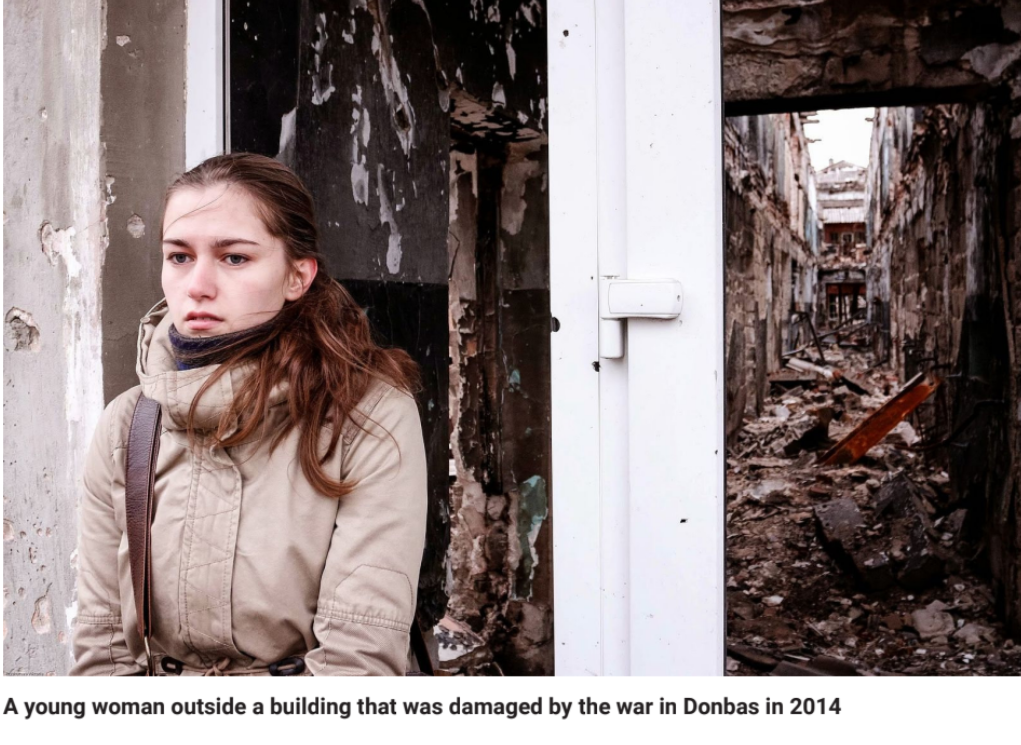
Postscript
A year after Trotsky wrote those words World War Two broke. It became truly a ‘World’ war, unlike the mainly European war of 1914/18. It would bring many times greater slaughter of civilians and lead to systematic genocide in the Nazi Holocaust. After that war there was a single unscathed superpower, the USA. Its vast financial resources allowed the USA to restabilise and restore the economies of the other imperialist powers, under US hegemony.
During the 1950s and ‘60s capitalism enjoyed a brief ‘golden age’ of relatively high growth, but within in a more limited geographical area. The Soviet Union took control of most of the impoverished countries of eastern Europe, in order to create a ’buffer zone;’ the Communist Party took power in China. In those regions capitalism was temporarily replaced by state ownership under Stalinist control, supposedly in endless co-existence with the far richer capitalist powers.
That would not long survive the end of the western imperialists’ ‘golden age’ and their turn to ‘neo-liberal’ economic policies, especially from 1979/80, with systematic attacks on the organised working class, and harsher exploitation of the neo-colonies. In 1989/91 the Soviet Union broke up; capitalism was restored from eastern Europe to the Far East. Over the next two decades inter-imperialist rivalries increased with the rise of two new imperialist capitalist powers, China and Russia, and a new age of wars began. The “Separate clashes and bloody local disturbances” of the last three decades have been far bloodier and more prolonged than those Trotsky referred to before World War Two, which were greater than those Rosa Luxemburg described in the lead up to World War One.
Thus the decades since World War Two have only made the resurgent death agony of capitalism more acute, the threat of world war – and nuclear war – more dangerous, and the need for revolutionary leadership more urgent.
The aim of Trotskyists, as continuators of revolutionary Marxist politics, is to build international leadership and action against ALL imperialist war plans and end imperialist rule across the planet.
[1] http://en.kremlin.ru/supplement/5770
[2] https://www.theguardian.com/business/2022/jan/21/imf-warns-china-over-cost-of-covid-lockdowns
[3] https://internationalviewpoint.org/spip.php?article7468
[4] Taiwan has a Chinese population and was seized by Japan in 1894/95. After World War Two the Communist Party took power on mainland China and the pro-capitalist government of General Chiang Kai Shek moved to Taiwan, where it was protected by US forces.
[5] The revolution of workers and soldiers early in 1917 that overthrew the Tsar and made Russia a republic.

#Ukraine #DefendAnIndependentUkraine #OurMainEnemyIsOurOwnRulingClass #BAMN #NoNATOWar
